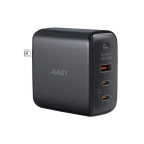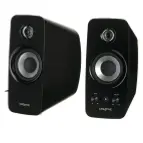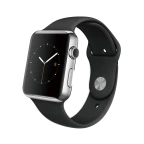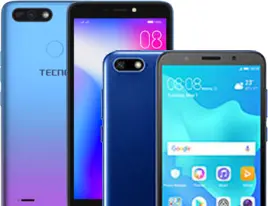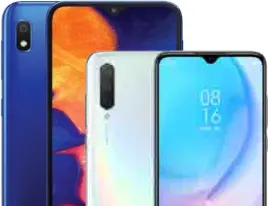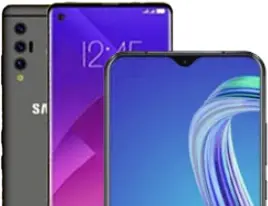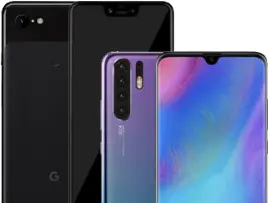

Huawei P20 Pro
Specifications
- 6.1 inchesDisplay
- 8 GB RAM OR 128 GB 6 GB RAMRAM
- 4000 mAhBattery
- nullBack Camera
| General Features | |
|---|---|
| Release Date | 01 Mar 2018 |
| SIM Support | Single SIM (Nano-SIM) or Dual SIM (Nano-SIM, dual stand-by) |
| Phone Dimensions | 6.10 x 2.91 x 0.31 in |
| Phone Weight | 180 g |
| Operating System | Android 8.1 (Oreo) |
| Display | |
|---|---|
| Screen Size | 6.1 inches |
| Screen Resolution | 1080 x 2240 pixels |
| Screen Type | AMOLED capacitive touchscreen, 16M colors |
| Screen Protection | null |
| Memory | |
|---|---|
| Internal Memory | 256 GB |
| RAM | 8 GB RAM or 128 GB 6 GB RAM |
| Card Slot | No |
| Performance | |
|---|---|
| Processor | Octa-core (4x2.4 GHz Cortex-A73 & 4x1.8 GHz Cortex-A53) |
| GPU | Mali-G72 MP12 |
| Battery | |
|---|---|
| Type | Non-removable Li-Po 4000 mAh battery |
| Camera | |
|---|---|
| Front Camera | 24 MP |
| Front Flash Light | No |
| Front Video Recording | 1080p@30fps |
| Back Flash Light | Yes |
| Back Camera | null |
| Back Video Recording | 2160p@30fps, 1080p@60fps, 1080p@30fps (gyro-EIS), 720p@960fps |
| Connectivity | |
|---|---|
| Bluetooth | Yes |
| 3G | Yes |
| 4G/LTE | Yes |
| Radio | No |
| WiFi | Yes |
| NFC | Yes |
Highlights
With the evolution of smartphone cameras from single sensors to double sensors, it wasn’t shocking to see some manufacturers take the leap and try setups with 3 or 4 sensors. With the Google Pixel 2 boasting the highest DxOMARK rating on a smartphone, Huawei set out to beat that score. And they did it with a 3 sensor setup. Introducing the Huawei P20 Pro! Claiming to have the greatest camera ever on a smartphone, it demands a price for it too. With a retail price of roughly Rs. 100k, it’s not a phone just anyone can afford.
Design
The Huawei P20 Pro is a stunner. One look at it and you’ll find yourself drooling all over it. Save the aluminum frames, the Huawei P20 is an all glass phone. Both front and back. The back of the phone is what makes it so attractive. One version of the phone has a gradient of colors reflecting off of it thanks to the glass used. Huawei calls this one the Twilight color. One second it’s purple, the other green, then blue. You won’t get tired of looking at it. The front of the phone is occupied by a large 6.1-inch bezel-less display. The top of the screen is where you’ll find the infamous notch. The phone is IP67 water and dust resistant but since it’s a glass phone, it’s a fingerprint magnet.
Display
The display of the Huawei P20 Pro is an AMOLED one, something to be expected of flagships nowadays. It measures 6.1-inches across and has a resolution of 2240*1080, or FHD+, giving it a pixel density of 408ppi. Strangely, Huawei didn’t equip the P20 Pro with a 1440p panel, given the price of the phone. Not that 408ppi isn’t enough for the human eye, but if you’re paying a super-premium price, one expects everything to be top notch.
Triple lens camera setup
The triple camera module, the main reason for this phone’s popularity and its main selling point. The combination is 40MP+20MP and a separate 80MP camera. The first camera has a huge sensor when compared to today’s flagships’ cameras, just like the Nokia 808 PureView and Lumia 1020. The size is 1/1.7”, not as large as the older camera kings of the smartphone world but still large enough to make a difference. Larger sensors mean more light and better looking photos. The camera doesn’t really shoot in 40MP to be precise, it shoots simultaneous 10MP pictures and combines them for a more refined shot. So keeping to the default 10MP setting will lower your file sizes. Other details of this camera are that is has an aperture of f/1.8, which helps in low light pics, a 27mm focal length and OIS, coupled with phase detection autofocus and a laser for autofocusing.
The second camera is a 20MP black and white one. It works in conjunction with the 40MP camera to produce clearer and crisper photos with more detail and depth since it lacks a color filter in its sensor which decreases the light input to the sensor. The aperture of this camera is f/1.6, since it is intended to help in low light, whereas the focal length is similar to the first camera: 27mm. OIS and phase detection/laser autofocus is found here as well.
Finally, the 3rd camera is a telephoto lens, which has a lens with an 80mm focal length, 3 times that of the other two, allowing for 3x optical zoom. Zooming further than this leads to a usage of the 40MP camera as well. Huawei calls this a hybrid 5x zoom.
The front camera is a 24MP one with an aperture of f/2.0 and it produces crisp and detailed selfies. All these specs have allowed the P20 Pro to dethrone the Google Pixel 2 as the smartphone camera champion with a DxOMARK score of 109! The pixel 2 had a 98.
Hardware
The hardware on the P20 Pro is nothing short of the best. Huawei is using its own custom processor: The Kirin 970. Besides being a beast in terms of performance, the Kirin 970 uses machine learning to anticipate how much of it should be used at what times of the day and during what apps the more you use it so as to keep usage of the processor efficient. There’s 6GB of RAM on board and 128GB of storage. A 4000mAh battery keeps the lights on for most of the day. Android Oreo 8.1 can be found on board under Huawei’s custom EMUI.
Huawei P20 Pro pros:
- Beautiful device
- Best camera on the market
- Large battery and lots of RAM/storage
- Powerful processor
Huawei P20 Pro cons:
- Price, it’s just too damn expensive.





